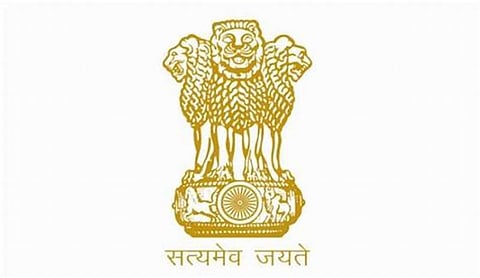
- Home
- Live Blog
- Breaking News
- Top Headlines
- Cities
- NE News
- Sentinel Media
- Sports
- Education
- Jobs

Bhutan’s proposed Gelephu Mindfulness City has brightened hopes for Assam’s Bodoland Territorial Region (BTR), unlocking its economic potential. The challenge for the Bodoland Territorial Council (BTC) and the Assam government is to ensure that BTR draws optimal benefits from the development of Bhutan’s border town, Gelephu. India and Bhutan have already jointly pushed for the final location survey of the proposed 58-km rail link connecting BTR headquarters in Kokrajhar with Gelephu. India has acknowledged that the proposed development of Gelephu will lead to economic prosperity and development in Bhutan and in the region in a sustainable manner and further strengthen economic and investment linkages between two neighbouring countries. Assam shares the longest stretch of 265 km of the total 697-km India-Bhutan international border, with Arunachal Pradesh, West Bengal, and Sikkim sharing the rest. The BTR serves as the gateway, with its location all along the Assam-Bhutan border stretch. Ironically, nearly 74% of India-Bhutan trade takes place through the West Bengal-Bhutan border, while trade through the BTR region is just 16% of total trade volume. Bhutan plans to develop Gelephu to tap the opportunities of the economic corridor between south and southeast Asia through Assam and other Northeastern states. For BTR, the opportunities and challenges are akin to those of the northeastern region in India’s Act East Policy. While trade volume between India and southeast Asia increased because of the Act East Policybut 95% of India’s trade with ASEAN originates in states outside the northeastern region. If BTR fails to draw lessons from such ground realities, it will remain a mere transit point between Bhutan and the rest of the world and will miss the bus like the northeastern region has missed it for more than three decades of India opening its borders to ASEAN and South Asian nations. The proposed Kokrajhar-Gelephu rail link with boosted connectivity and production hubs of BTR having seamless connectivity to this rail link will be crucial to tapping opportunities for trade and commerce. Bhutan is planning to build an international city at Gelephu, spread over an area of 1000 sq. km, which is larger in size than Singapore. Gelephu domestic airport has already been upgraded to an international airport, and the introduction of international flights connecting it will boost tourism to the Himalayan kingdom. It will bring opportunities for tourism entrepreneurs to attract tourists visiting Gelephu to BTR, which has iconic tourism destinations like Manas National Park in a singular tourism circuit. The entire Manas landscape spreading along the BTR-Bhutan borders is endowed with huge potential for developing niche eco-tourism products and selling them to high-end tourists visiting Bhutan. Revival of Indo-Bhutan Friendship Fairs in BTR under the aegis of BTC can be a launching pad for collaborative initiatives between India and Bhutan to initiate projects, including in the tourism sector, for faster economic progress in border regions of both nations. Increasing economic interdependence among communities living on both sides of the border will also help realise the full potential of the cross-border connectivity projects. While direct trade opportunities between BTR and Bhutan may be limited, people in BTR can greatly benefit if they can tap the opportunities created by increasing trade and commerce relations between Bhutan and ASEAN and South Asian countries. This will require a series of brainstorming sessions among stakeholders and innovative ideas among entrepreneurs in BTR. The BTC authorities commissioning studies by experts on the potential to be created by the proposed Kokrajhar-Gelephu rail link and the development of Gelephu can help identify areas that need to be prioritized. Being a subject of international cooperation, the BTC authorities will have to move the Ministry of External Affairs and the Ministry of Commerce with the support of the Assam government to push its plans finalised, keeping in mind Bhutan’s plan to develop its border regions as economic hubs. Successful implementation of the Gelephu development plan can be expected to prompt the neighbouring country to also focus on Samdrup Jonkhar, another key border town with trade and commerce links with Assam through BTR. With increasing trade volume between Bhutan and Bangladesh and India playing a crucial role in facilitating it, Assam, including BTR, has a natural advantage in attracting investors coming to Bhutan to invest in the state and pick up multi-country projects. The entire international border region being ecologically fragile, there should be enough checks and balances in identified investment proposals to prevent rampant destruction of ecology in the name of development and economic progress. The Assam government and BTC authorities need to help traditional Bodo women weavers brand their unique handloom products to tap the international market. Empowering them with digital technology can help these weavers leverage the online markets and augment their household income. The BTC authorities, organising international trade and tourism fairs with an eye on the Gelephu development plan of Bhutan, undertaking skill development of youth in BTR, and impressing upon key players in the logistics sector, can build the desired ecosystem.